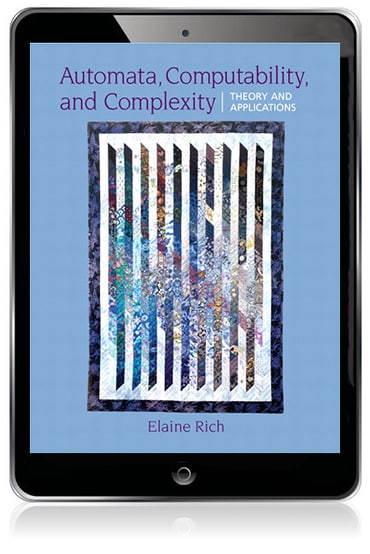Switch content of the page by the Role togglethe content would be changed according to the role

Automata, Computability and Complexity: Theory and Applications, 1st edition
Published by Pearson (August 8, 2018) © 2019
- Elaine A. Rich
$79.95 AUD
Title overview
For upper level courses on Automata.
Combining classic theory with unique applications, this crisp narrative is supported by abundant examples and clarifies key concepts by introducing important uses of techniques in real systems. Broad-ranging coverage allows instructors to easily customise course material to fit their unique requirements.
